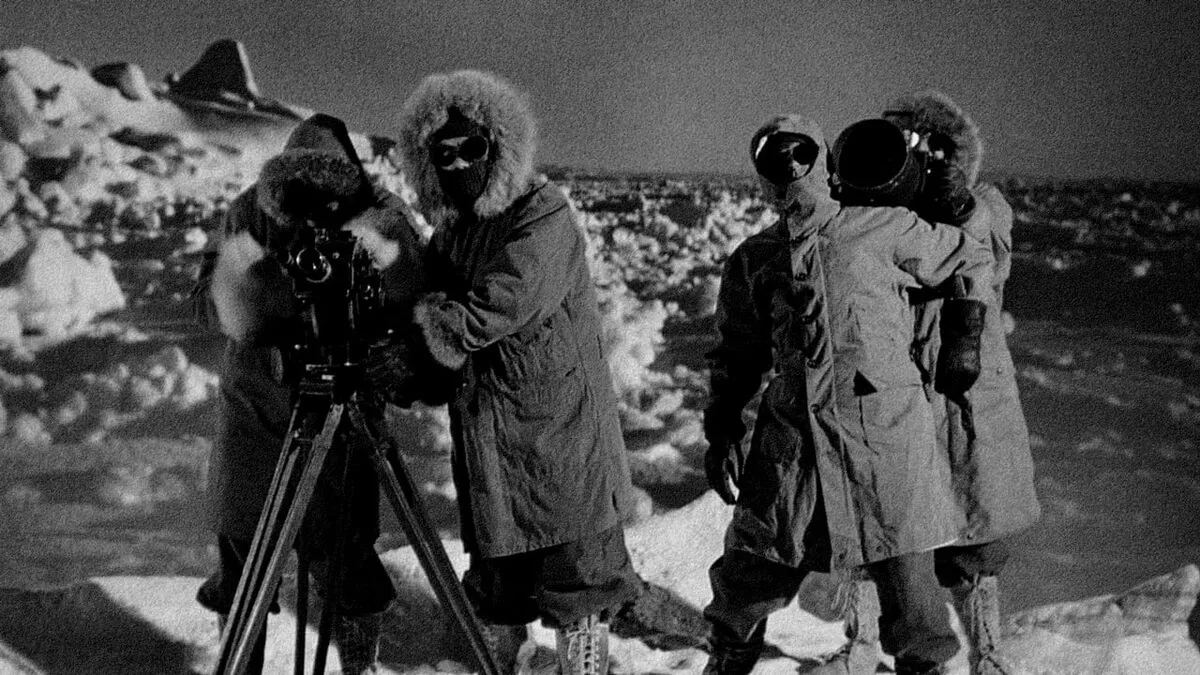I followed up Them! with the classic Ray Harryhausen picture The Beast From 20,000 Fathoms (1953).
This was, as far as I can figure, the very first Atomic Monster movie. There had been films with giant creatures before, most notably Kong, but the Kaiju genre as we understand it really began with this film. Beast was released just over a year before Gojira, and the influences on the later film are manifold. All of the basic plot elements are there, and the original script even called for the Beast to breathe atomic flames just like his Eastern cousin. The biggest difference between the two is the way in which the films brought their monsters to life. Gojira famously employed ‘suitmation’ to deliver a very naturalistic looking monster who interacted directly with the city he was destroying. Beast instead opted for the masterful miniature and stop-motion effects of Ray Harryhausen, integrating matte shots and technical effects with creature effects to sell the illusion of scale. Both films accomplish their goals quite effectively, and both highlight the advantages (and disadvantages) of either method.
The film opens on an Arctic expedition intended to test an Atomic device and collect some unspecified data. Our lead, Professor Tom Nesbitt (Paul Hubschmid, who was a Swiss actor who appeared in light-entertainment flicks produced by the Nazis…) and a colleague are hiking out to the detonation site in order to conduct their readings when they are attacked by a mysterious creature emerging from the ice. Nesbitt survives, but he is committed to a hospital upon his return, with nobody believing his tales of a giant monster.
Eventually, with the help of Professor Thurgood Elson (Cecil Kellaway, who is great in Harvey, and also every other role where he plays a silly little doctor man) and his beautiful assistant Lee Hunter (Paula Raymond), Nesbitt begins to accumulate evidence that the beast exists. Boats have been attacked, and a lighthouse destroyed (in the sequence that “inspired” the movie, from a Ray Bradbury short story. The sequence was already scripted, but when the filmmakers saw the success of the Bradbury story, they bought the rights to it and heavily pushed that angle in marketing.), making it harder and harder for the authorities to ignore him.
There is a lot of dubious scientific speak thrown around, a lot of it humorous, but one tidbit that stuck out to me was an Anecdote that Lee related about a group of scientists finding Mastodons so well preserved by permafrost that their flesh was still edible. I have no idea if that was true in 1953, but it definitely is today. In 2013 a group of Korean scientists cooked and ate samples of Mastodon tissue, finding that it was tough, but flavorful.
There are lot of great locations in this flick, from the Arctic sets, to the boats and underwater sequence with a diving bell, to the streets of Gotham itself. Harryhausen masterfully blended miniature effects with in-camera split-matte techniques to bring his monster into the same space as the actors, and it works extremely well. I won’t sit here and tell you that it looks better than later practical effects, or even modern CGI, but it has a visceral physicality to it that makes it impossible to look away, even if the eye is never exactly fooled. The varied backdrops and destructable environments ensured that the gimmick never wore out its welcome either, I was always eager to see what the Beast was going to do next. The Beast itself is shown on-screen much more freqiently than the ants from Them! and even a lot of later Kaiju movies that rely on tiny glimpses to build suspense. We catch a decent look at the Beast early on, and then it’s not a long wait before his full boat-smashing reveal. The action itself is fun and exciting all the way through.
I found the human actors somewhat less compelling than the cast of Them!, although most of that is antipathy towards Paul Hubschmid who seems to be an in-universe Operation Paperclip type figure, in addition to being a dancing monkey for the real-life Nazis. Paula Raymond and Cecil Kellaway are delightful, and I would have much preferred if they had been centered as the film’s protagonists with Nesbitt being relegated to a supporting role, probably much like the one Kellaway actually plays. Lee Van Cleef shows up at the end as a National Guard sharpshooter, in a fun little role that foreshadows his long career as a hollywood gunslinger.
I’m going to give this one a 4.5/5. If I liked Paul Hubschmid even a little, this might be a 5 star film.


